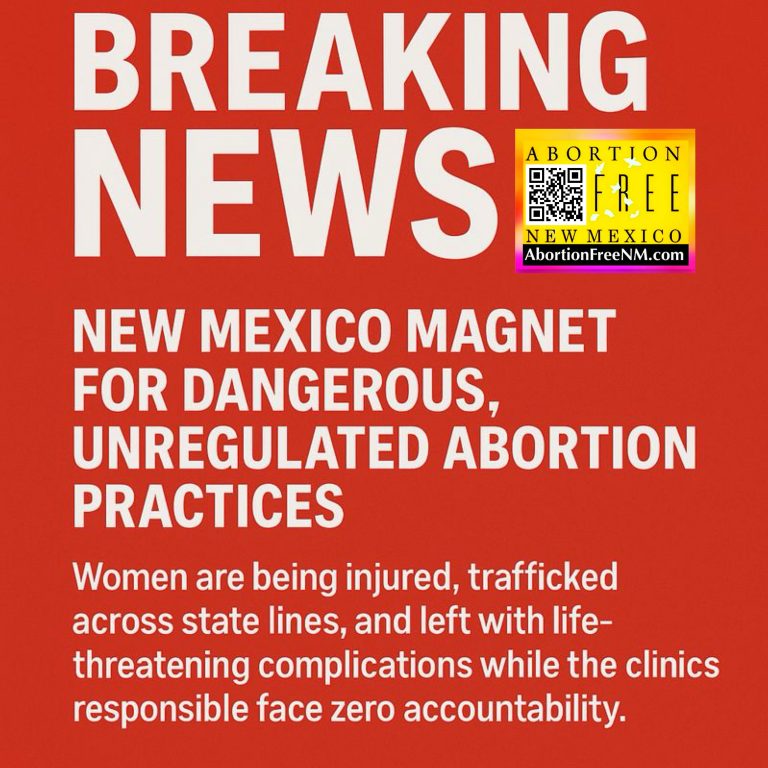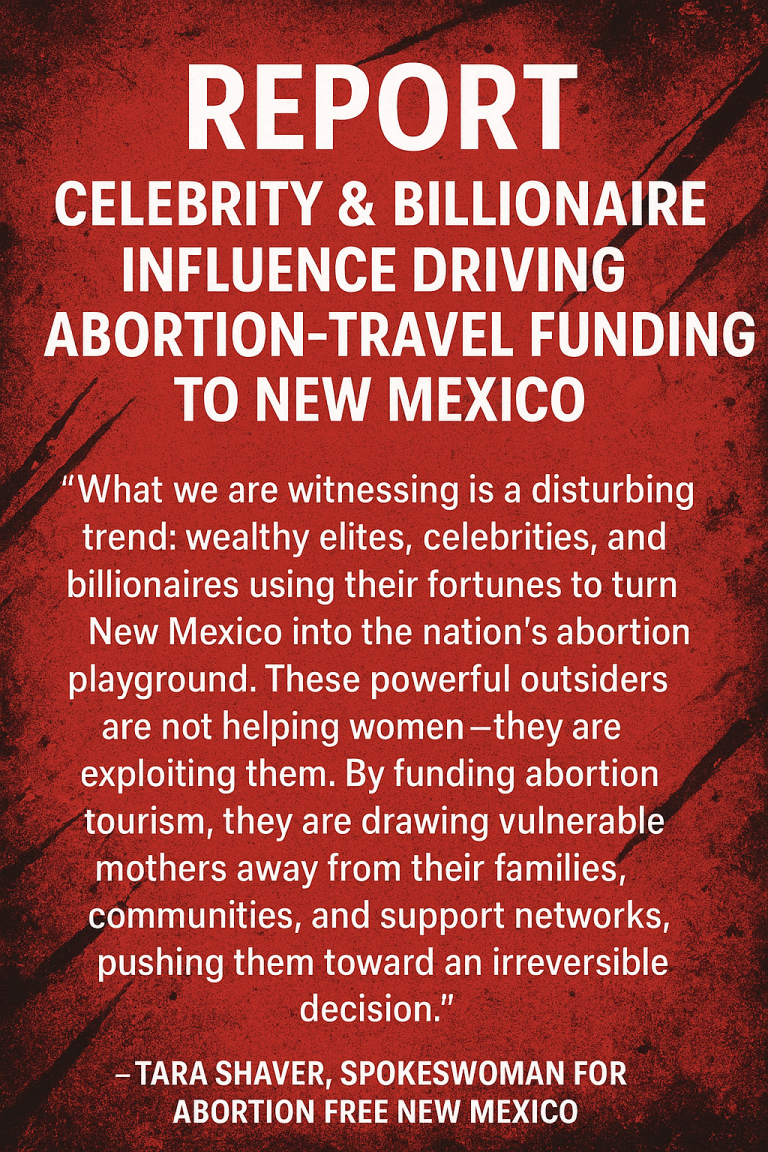
By Tara Shaver
 Albuquerque, NM — Since 2008, New Mexico’s abortion rate has been on a steady decline. This is great news in a state where abortions are performed through all nine months of pregnancy without restriction. However, that news is tempered by the fact that abortions funded by tax dollars are on the rise.
Albuquerque, NM — Since 2008, New Mexico’s abortion rate has been on a steady decline. This is great news in a state where abortions are performed through all nine months of pregnancy without restriction. However, that news is tempered by the fact that abortions funded by tax dollars are on the rise.
According to New Mexico vital statistics, 3,134 abortions were performed in 2012, a significant decrease of 2,002 abortions from 2008 figures when 5,136 abortions were performed. This represents a 39 percent decrease in abortions over a five-year period.
This overall reduction in abortion can be attributed to public outreach through ministries like Project Defending Life, whose efforts include prayer and protests at local abortion clinics and serving women when they choose not to abort. Also, education has played a big role in decreasing abortion at a city level in Albuquerque, home to 3 of the 5 remaining abortion clinics in the state, through church outreach and a steady stream of local media coverage of abortion injuries and the lack of clinical oversight.
“When the community at large knows how precarious abortions are and when women themselves know the risks involved, women choose not to pursue an abortion. Since New Mexico has adopted no common-sense legislation regarding abortion, all of the successes must be attributed to those who faithfully work day in and day out to end abortions one woman and child at a time,” stated Bud Shaver, Executive Director of Protest ABQ.
While overall abortion numbers have decreased, tax funded abortions through New Mexico Medicaid saw a 20 percent increase over the previous year’s numbers. New Mexico is one of 15 states to fully fund abortions, not using any federal funds but state funds. This forces everyday citizens to foot the bill for dangerous and deadly abortions.
In 2013, 811 abortions were billed to the state, costing taxpayers $160,007.51.
The largest portion of these abortions was performed at the state’s late term abortion clinic, Southwestern Women’s Options where the very latest of abortions are done. SWO employs Susan Robinson and Shelley Sella who reside in California; their net income in 2013 from New Mexico Medicaid was $74,770.78 for performing 335 abortions.
The University of New Mexico performed 126 Medicaid funded abortions in 2013, which cost taxpayers $24,729.65.
Protest ABQ has prepared the chart that details the amounts paid to abortion providers in New Mexico for abortions in 2013.
Click Here To View Chart
Each year that goes by without any action from the state’s legislature and Governor, out-of-state abortionists will continue to bilk New Mexico taxpayers while evading their own state’s laws that prohibit the very abortion procedures that are so profitable for them in New Mexico. This is just another way New Mexico has become the “go to” place for extremely late abortions, drawing not only out-of-state abortionists but also women seeking abortions beyond the legal limits in their home states.
This report is being published one week after members of Protest ABQ met with Governor Susana Martinez, once again urging her to reign in the out of control and unregulated abortion industry that is costing tax payers big money in New Mexico.
Protest ABQ is leading the charge to protect life and is calling on pro-life groups to join us for a National Call to Action involving national protests against abortion, culminating with a National Strike on January 22, 2015.
“We need to stand up and ‘protest’ to bring about the end of pre-born child killing. . .peacefully but protest! Until all those who oppose pre-born child killing are willing to go into the streets in ‘protest’ of what we know is wrong and unless we are willing to call and enact a ‘national strike’ to end the child killing, this will all remain legal,” stated Fr. Stephen Imbarrato Founder of Protest ABQ.
________
Note: The video in this story was made in 2011 and revealed at that time that New Mexico taxpayers were being forced to foot the bill for expensive late-term abortions on babies with Down Syndrome. This practice not only continues today, but is on the increase.




